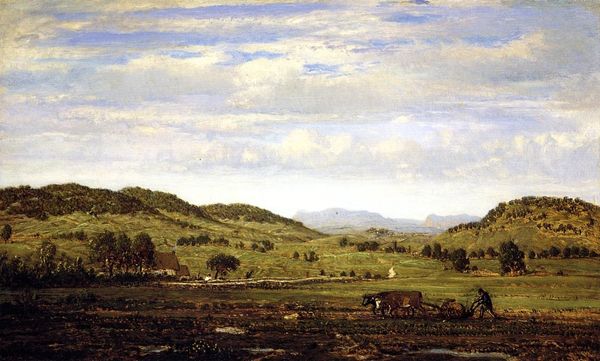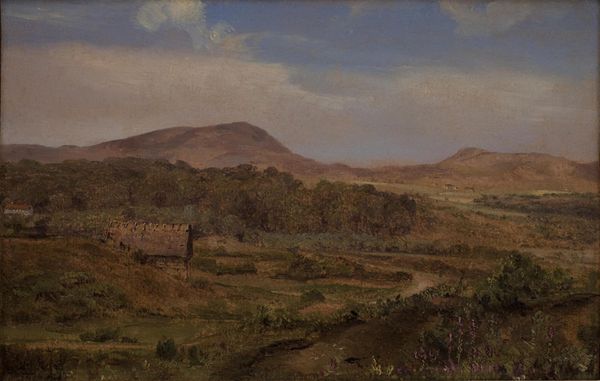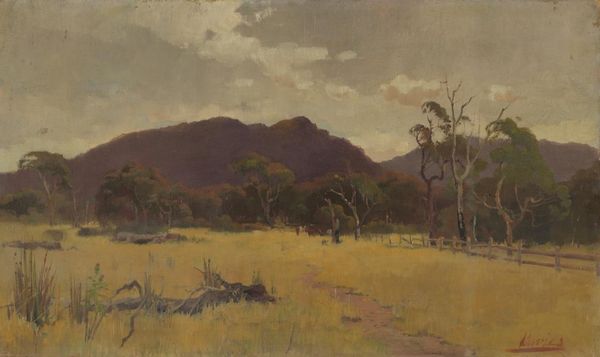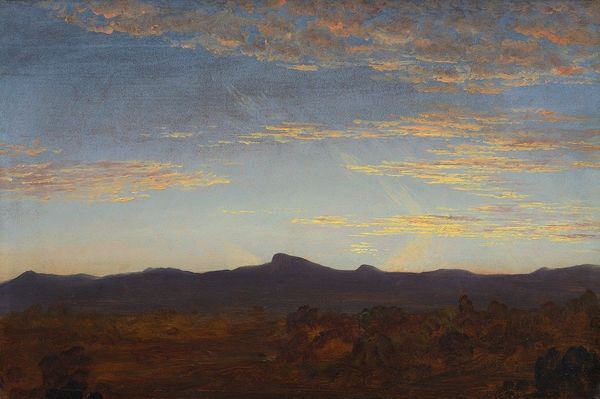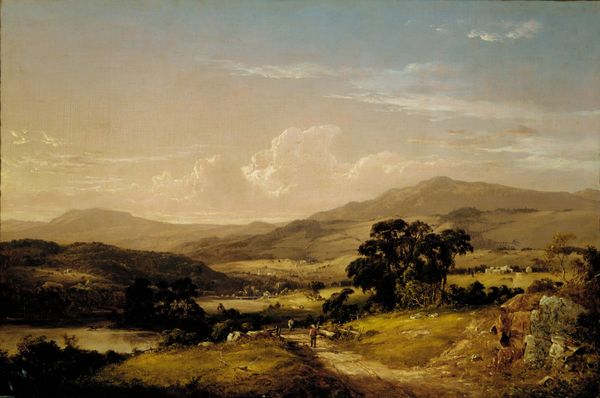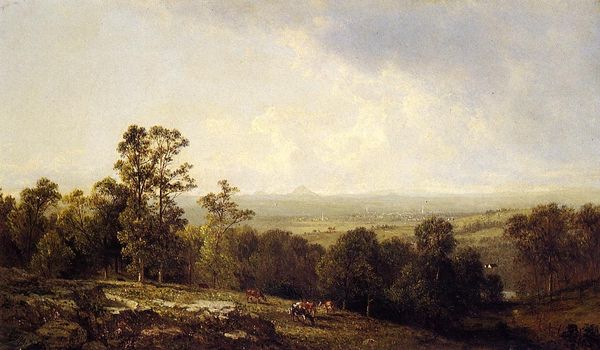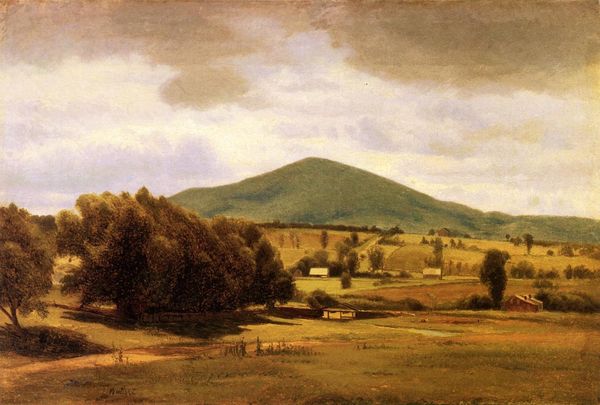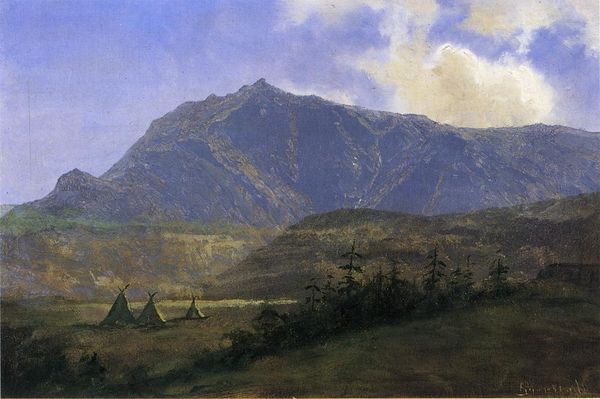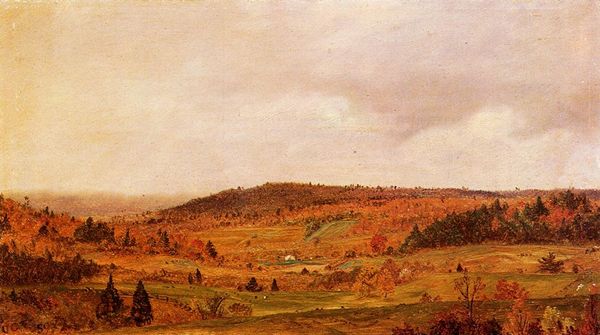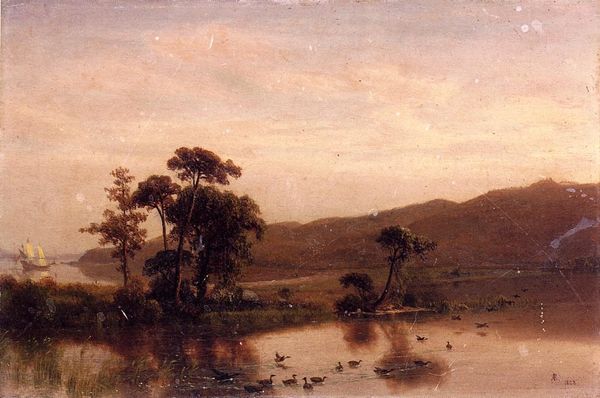
Copyright: Public domain
Editor: David Johnson's "Mount Chocorua, New Hampshire," painted in 1851, is really stunning in its depiction of this pastoral landscape. The way the mountain rises gently in the background creates a feeling of serenity. How do you interpret this work? Curator: The power of a mountain like Chocorua lies in its long history within a collective imagination. For the Native Americans, mountains were often sacred sites, embodying spirits or gods. Does the painting's careful positioning of the mountain evoke something of this reverence to you, a link to primordial beliefs? Editor: I hadn't considered it in that light. I was more drawn to the visual aspect. The vastness almost flattens it; it's huge, but not overpowering. Is that intentional? Curator: Absolutely. It speaks to the core Romantic concept of the sublime – that potent mix of awe and peace one finds in nature’s grandeur. The artist, while realistic, diminishes any potential terror by depicting it through a filter of calm, human accessibility and frames it by symbols of stewardship. Even the colors and light seem consciously chosen, don't you think? Editor: I see what you mean about light. The glow kind of softens everything. Are the open fields in the foreground and the fences markers of new American optimism at that time? Curator: Precisely. These symbols speak to a nation’s narrative, a cultural ambition where even wilderness becomes something domesticated. How else do you think we are conditioned to feel by these features? Editor: Now that you point it out, there is a clear message, connecting to identity. Thank you for making it clear. Curator: You're welcome. Recognizing symbols helps to understand that landscapes do much more than present visual beauty; they are narratives woven into the very fabric of how cultures see themselves.
Comments
No comments
Be the first to comment and join the conversation on the ultimate creative platform.
